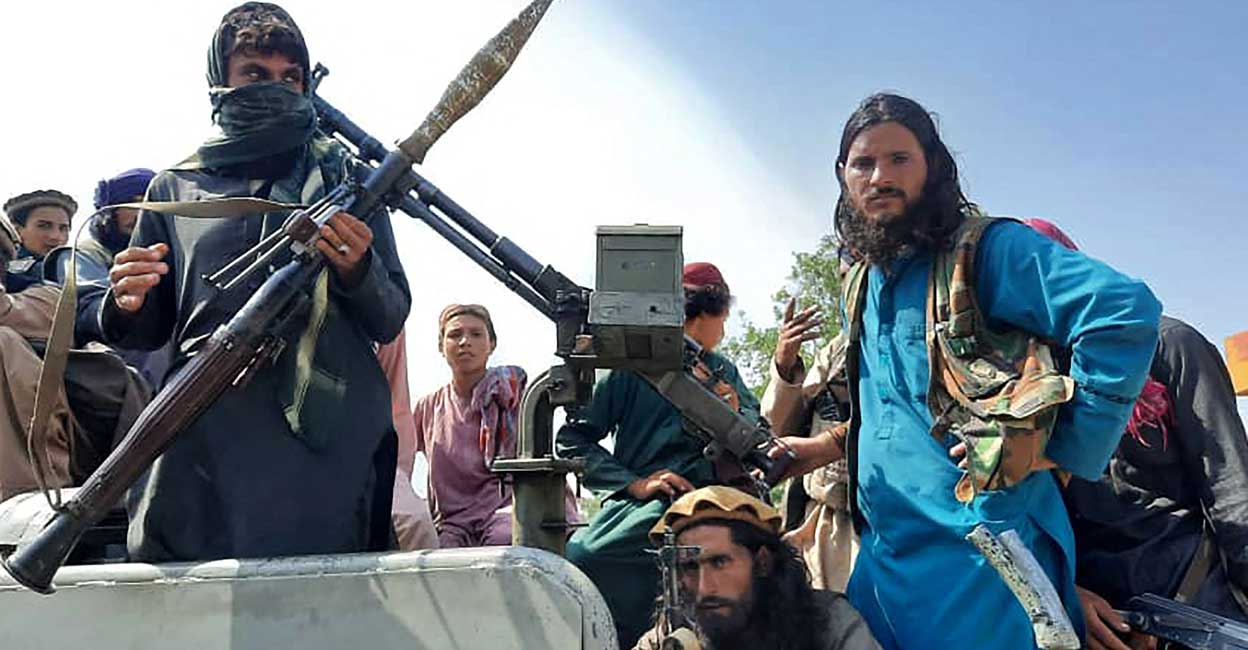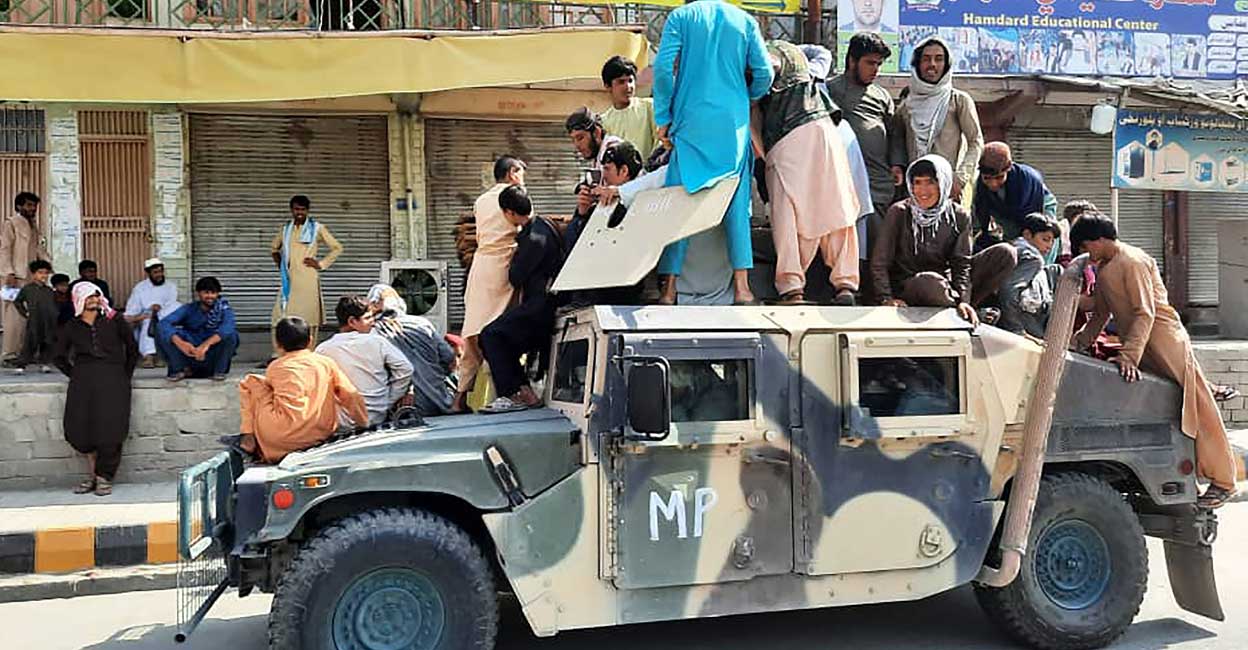Why Afghan army failed against Taliban despite having better weapons

Mail This Article
On Sunday afternoon, Taliban were on the brink of total in Afghanistan, as their fighters surrounded the Kabul and waiting for furthers orders. Negotiations are underway for transfer of power to a transitional government.
The world was expecting this to happen in a matter of a few months. But the pictures released by the Taliban a few days ago of an Indian-gifted Mi-24 helicopter falling into their hands had sent the message to India. It indicated that despite the superior weaponry that the Afghan national army and air force had, they were simply surrendering weapons and giving way, without much of a fight in several places.
Yes, the Afghan national army had weapons, but the Taliban was prevailing in the battlefield. The pictures also signified that countries like India which had supported the national government and its army were failing now. They were not supplying the spares that were needed to operate the weaponry.
Indeed, the helicopter was a dud for long. It could not fly. Its rotor blades and engine had been removed by the Afghan forces themselves so as to deny the use of the machine to the Taliban. The chopper fell into the Taliban's hands after they captured Kunduz airbase. It had been gifted by India to Afghanistan Air Force in 2019 to bolster Kabul’s counter-terror operations.
In 2019, two Mi-24 V attack helicopters were handed over to Afghan Air Force as a replacement for the four helicopters previously gifted to Afghanistan in 2015 by New Delhi. Mi-24 helicopters were given under a deal between Afghanistan and Belarus, but financed by India. Prime Minister Narendra Modi, during his visit to Kabul in December 2016, had handed over four Mi-35 attack helicopters to Afghan Air Force. Three Cheetah light helicopters were also given by India to Afghan forces. Indian military has been assisting Afghan National Defence and Security forces by training their soldiers and pilots as well.

The Afghan Air Force was using these attack helicopters in combat operations and was learnt to be quite satisfied with the performance of choppers as they were giving them an edge on-ground operations. But, a few months back, they had asked for spare parts and maintenance for these helicopters.
Besides the choppers gifted by India, Afghan Air Force operates several US-made aircraft like UH-60 Black Hawk and MD500 Defender helicopters along with fixed-wing counter-insurgency specialist aircraft A-29 Super Tucano. Additionally, the Afghan Air Force flies Russian-made Mi-17 helicopters, as well as C-130 and Cessna transports, and a small fleet of armed Cessnas.
In short, the Afghan national forces had superiority in weaponry over the Taliban. They also had better trained troops, and better trained commanders. Yet they were not able to prevail in the battlefield, because “their morale had sapped,” said an Indian army officer.
The decision of the US to actually withdraw their troops, say Indian officers, had been a debilitating blow to the Afghan army's will to fight. With the result, on Sunday, Talibani fighters finally entered Kabul. Taliban were in the districts of Kalakan, Qarabagh and Peghman.
But the Taliban has ordered its fighters to refrain from violence and allow safe passage for anyone wanting to leave. Taliban negotiators were heading to the presidential palace to prepare for a 'transfer' of power.
The acting Afghan interior minister Abdul Sattar Mirzakwal come on a television channel by saying there would be 'peaceful transfer of power' to a transitional government. He made it clear that Kabul would not come under attack. The Taliban offensive has accelerated in recent days and within a week after gaining control of the first provincial capital, they have control over major parts of the nation. On Sunday, Taliban claimed the anti-Taliban northern stronghold of Mazar-i-Sharif and the eastern city of Jalalabad.

The Afghan military has been fighting against the Taliban for a long, but the conflict escalated after May this year when the the US-led military coalition began the final stage of a withdrawal from Afghanistan. Now, the United States has dispatched 3,000 troops to Kabul, but that is only to secure the airport so that they can evacuate the staff in their embassy. Similarly, other European nations like UK, Germany, Spain and Denmark have also announced the withdrawal of personnel from respective embassies in Afghanistan.
Keeping a close watch, India has already brought back its personnel from its Consulates in Herat and Kandahar and a special flight was arranged to evacuate 50 Indian nationals and the staff of the Indian Consulate in Mazar-i-Sharif. And with the latest developments, New Delhi has worked out an elaborate plan for a swift withdrawal of diplomats from the embassy in Kabul along with other Indian nationals, most of the workers engaged in the infrastructure sector. Heavy airlift transport aircraft of the Indian Air Force is on standby for an immediate evacuation of Indian nationals, if the situation arises. There are close to 1,500 Indian nationals in Afghanistan working on multiple projects including the building of the Shahtoot Dam on the Kabul River, the work for which has just started only.
India has invested close to $3 billion for reconstruction and development projects in Afghanistan. The 218-km road between Delaram and Zaranj, India-Afghanistan friendship dam (also known as the Salma Dam), and the Afghan Parliament building which was inaugurated in 2015, were constructed with India's support.

